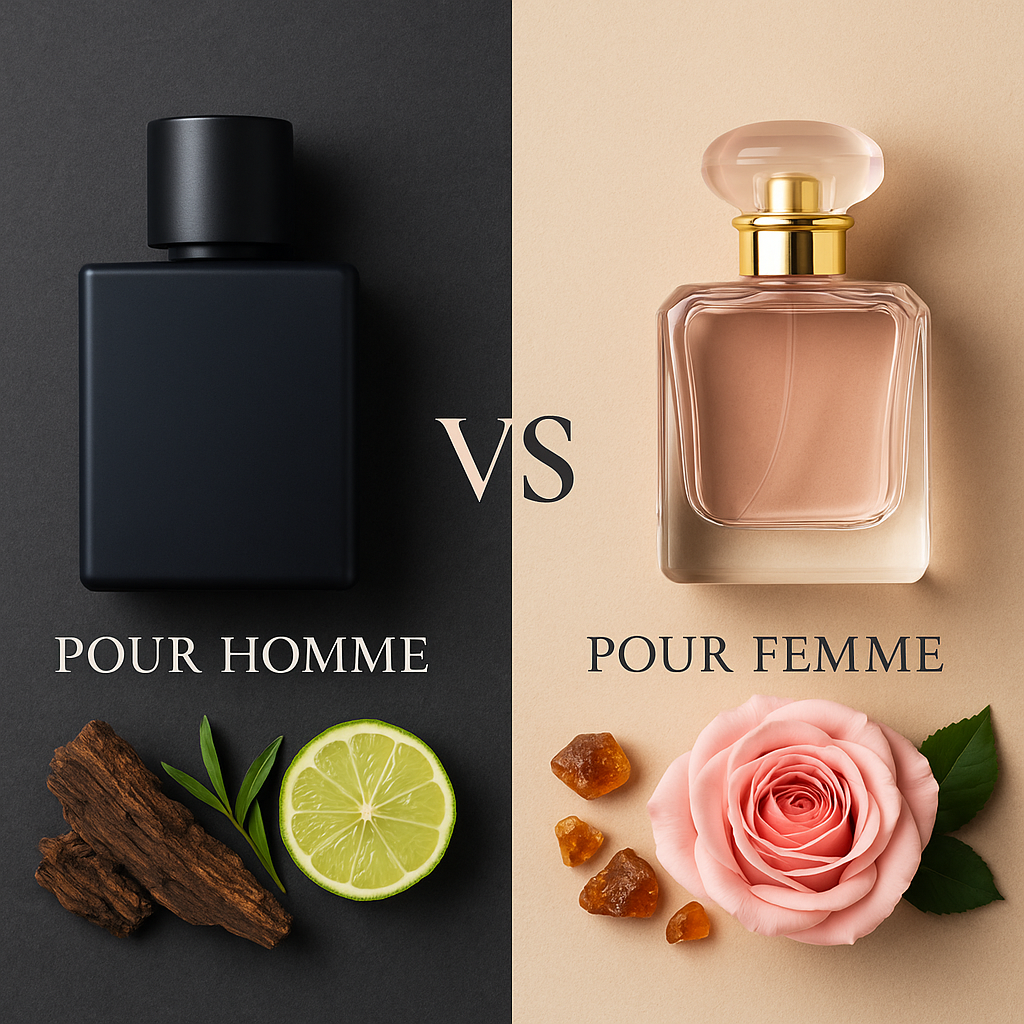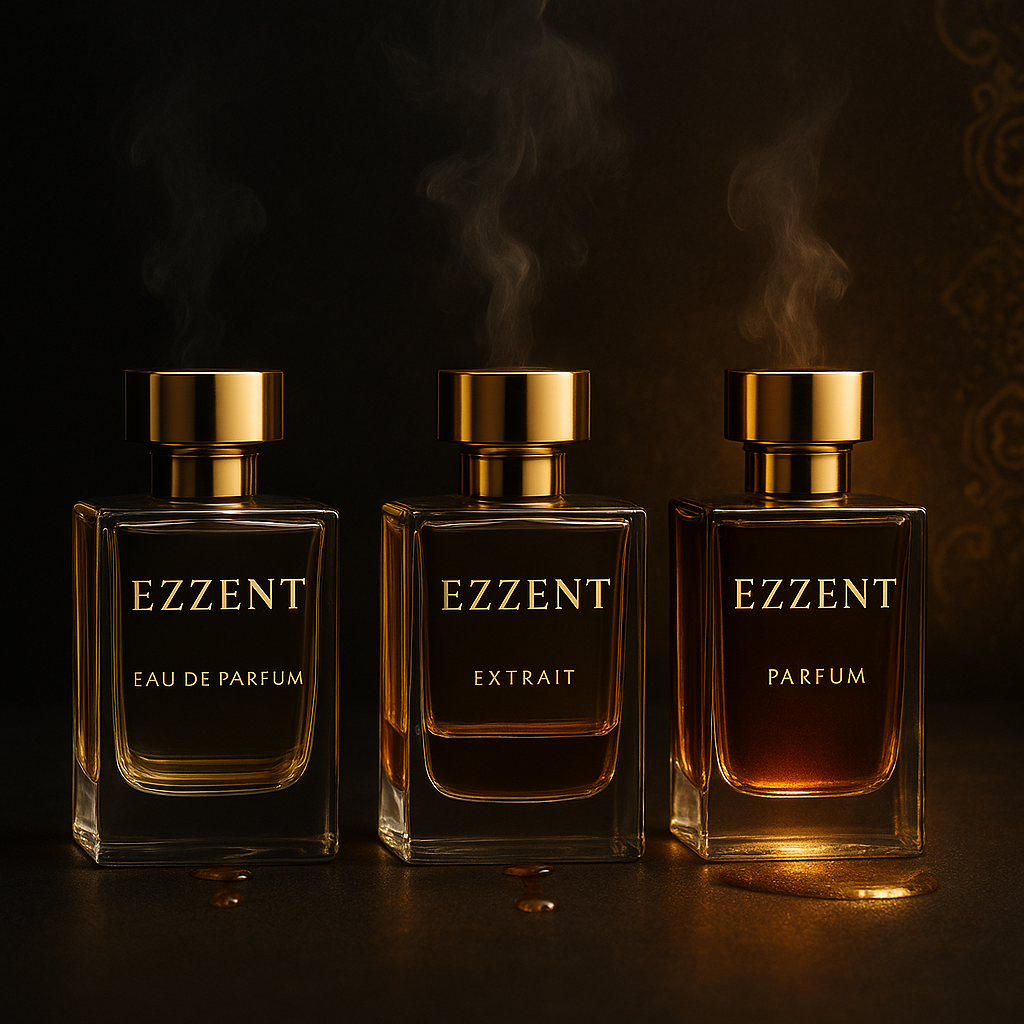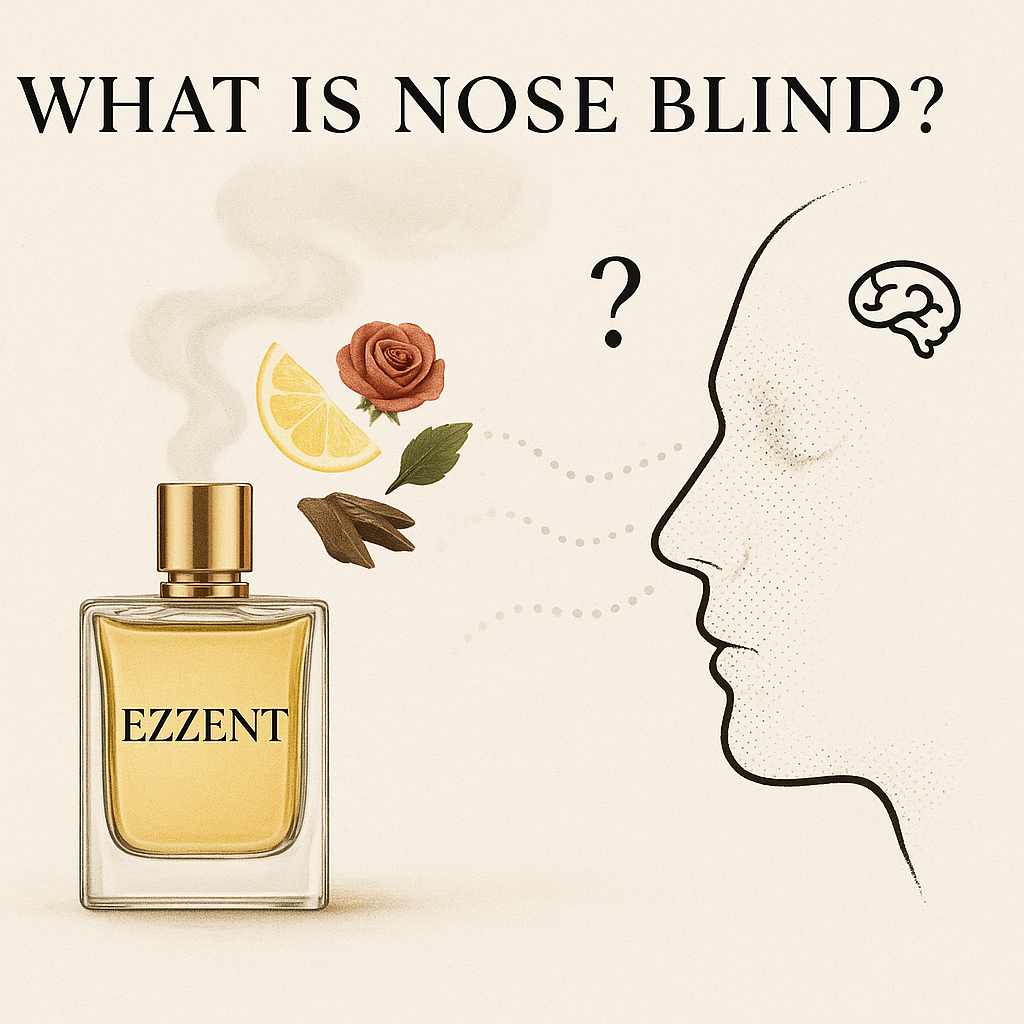
Pour Homme vs Pour Femme: What’s the Difference in Perfume?
You’ve probably seen “Pour Homme” or “Pour Femme” written on perfume bottles. But what do they actually mean? Is it just fancy French, or is there more to it?
Let’s decode these elegant labels and understand how gendered fragrances work in the world of perfumery.
🗣️ What Do “Pour Homme” & “Pour Femme” Mean?
These are French terms:
-
Pour Homme = “For Men”
-
Pour Femme = “For Women”
But it’s not just about who it’s for — it’s about how the scent is designed, how it feels, and how it performs on the skin.
🔍 Main Differences Between Pour Homme & Pour Femme Perfumes
| Feature | Pour Homme (For Men) | Pour Femme (For Women) |
|---|---|---|
| Scent Profile | Woody, spicy, smoky, citrusy, fresh | Floral, fruity, sweet, creamy, musky |
| Note Structure | Sharp top notes, aromatic herbs, rich base | Lush floral hearts, smooth sweet dry-down |
| Projection | Often stronger and bolder | Softer, elegant, and more intimate |
| Bottle Design | Sleek, bold, minimal | Elegant, soft curves, feminine touch |
| Target Feel | Masculine, fresh, powerful | Feminine, sensual, graceful |
👃 Examples
💼 Pour Homme
-
Dior Sauvage – fresh, woody, bold
-
Bleu de Chanel – citrusy, clean, professional
💃 Pour Femme
-
Chanel Coco Mademoiselle – floral, elegant, confident
-
Lancôme La Vie Est Belle – sweet, powdery, romantic
💡 But Wait… Can You Wear Either?
Absolutely!
Fragrance has no gender — only personality. Many women wear men’s colognes for their boldness. And many men enjoy feminine perfumes for their sweetness and softness.
🌟 Unisex fragrances are now hugely popular too — made for everyone.
✨ Final Spritz
Whether it says Pour Homme or Pour Femme, what really matters is how you feel when you wear it.
Choose the one that speaks your style, your mood, your energy.
Because scent… is personal.










